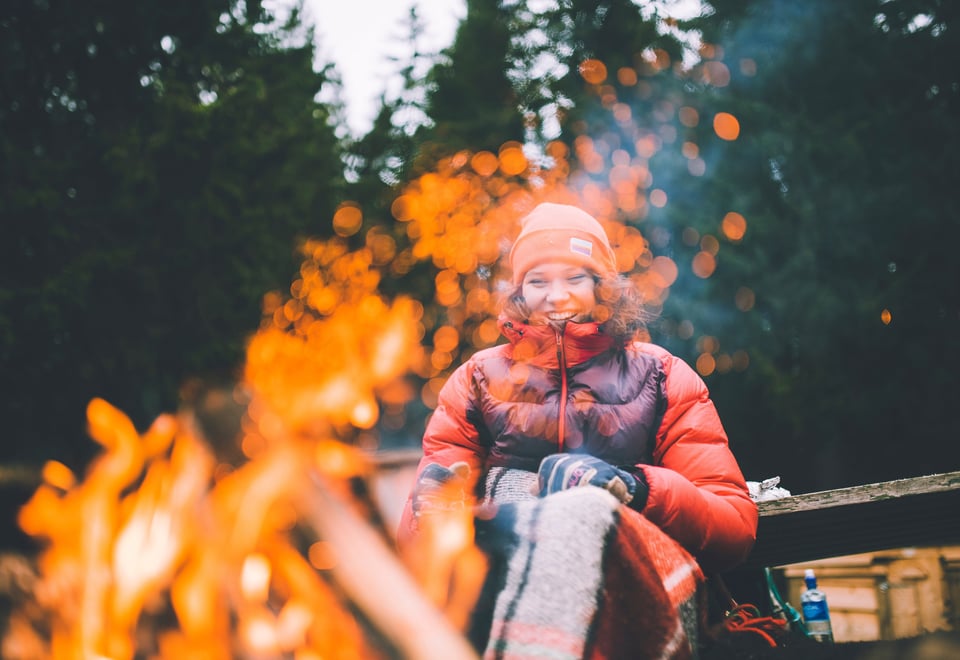
When and where can you light a bonfire in Norway?
Wondering how to light the fire? Here you will find answers to when you can light a fire, where you can light a fire and what you should think about when making a fire in nature.
For many of us who love the outdoors, lighting a bonfire is a highlight that makes the hiking experience complete. On a trip alone, there is a lot of company in a campfire. You can feel calm and safe, while stress and hustle disappear. What remains is silence, birds chirping and beautiful crackling from the fire.
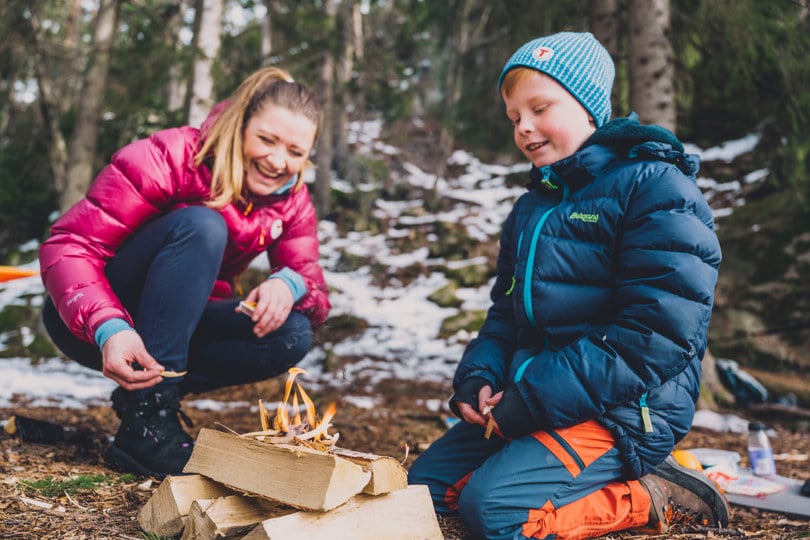
What does the law say about bonfires?
Lighting a fire on a trip is a common right in Norway. However, this does not mean that it is always allowed to light a fire, or that it is equally wise in all conditions. In Norway, there is a general bonfire ban from 15 April to 15 September. During this period, it is forbidden to light fires and barbecues in or near forests and other uncultivated land.
In general, the duty of care applies: It is forbidden to make a fire or handle flammable objects outdoors under such conditions or in such a way that it could lead to a fire. Settled fire must not be left until it is completely extinguished.
In spring and summer, it tends to be dry. This increases the risk of forest and heather fires.
Bonfire ban from 15 April to 15 September
There is a bonfire ban from 15 April to 15 September in Norway. This means that it is not allowed to light fires, disposable barbecues, fire pans and other open fires, in forests and outlying areas without permission from the municipality. Although there is a general ban on bonfires, you are allowed to light a fire where it is obvious that a fire cannot start, for example if there is snow on the ground.
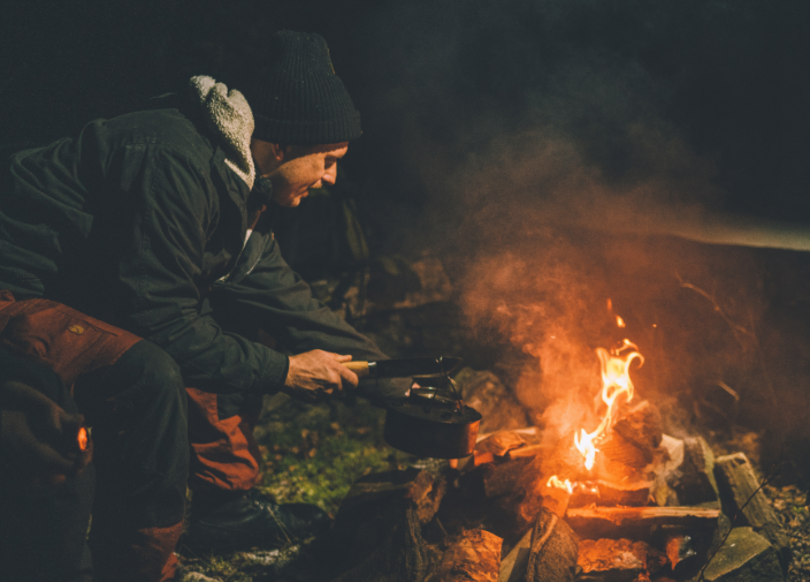
It is always you who must assess the danger of lighting a fire, or using a disposable barbecue, and fire pit. You are responsible for ensuring that it is safe while it is burning and that it is properly extinguished before leaving the place.
In some protected areas and national parks, special rules apply that you should familiarize yourself with before visiting these areas. These can be rules regarding the gathering of firewood, established fire pits or areas with a ban on open fires.
How to light a fire safely all year round
The regulations on fire prevention allow for bonfires also in the summer months. At the same time, this means a greater responsibility on the individual to assess the conditions well before lighting a fire.
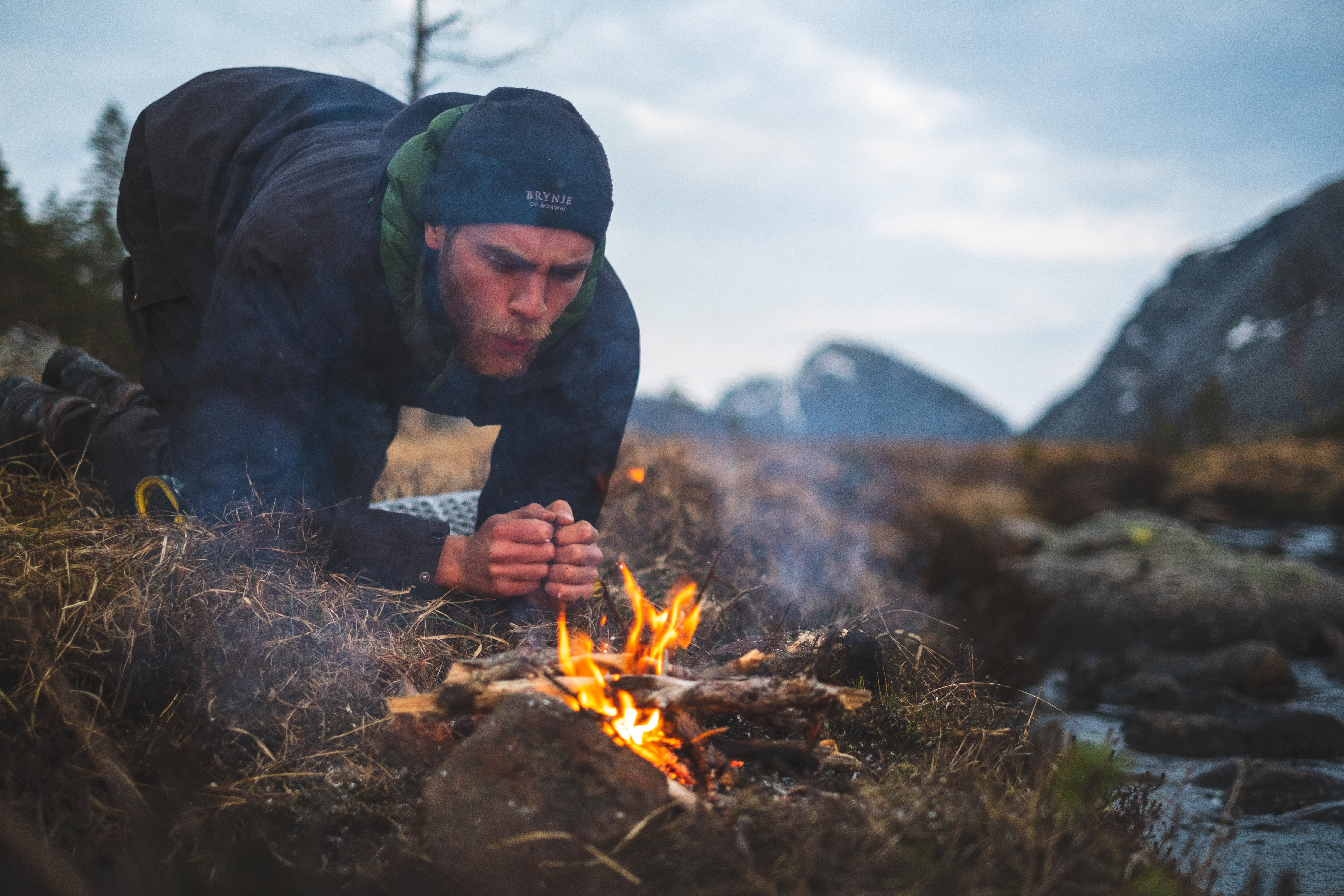
- It is important to keep a safe distance from flammable forests and fields. Remember that embers from the fire can blow far away with the wind before they go out.
- Adapt the size of the fire to its purpose. A small coffee fire leaves less trace in nature, and is easier to control and extinguish. Think about how you will manage to extinguish if the fire gets out of control before you light the fire.
- Always choose a surface that cannot catch fire and where the fire does not harm nature. Rocks, gravel and sand are the safest. In popular hiking areas, there are often established campfire sites you can use.
- Do not light a fire directly on bare rock or rocks. This leaves ugly marks, and the rock can crack open.
- Do not damage standing trees if it is to be harvested. Use only dry, dead twigs. Old dry pines are important for many birds and insects, and should never be used as firewood.
- Before setting up a fire, you need to think about the wind direction and where it is nice to sit in terms of sun, draughts and terrain. You may still feel that the smoke is coming right where you are sitting. To counteract this, you can, for example, put the backpack on the opposite side of the fire.
- When you leave the fire pit, all embers should be completely extinguished. The campsite must be left as it was when you arrived. If you have moved stones and logs, put these back where you found them. Take all rubbish home with you.
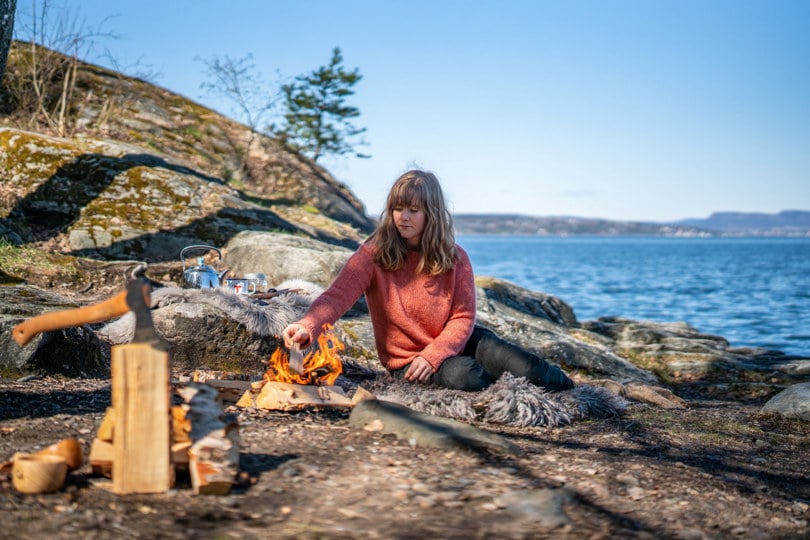
How to light the fire
- Fists from birch, dry grass, leaves and dry twigs are good to use for kindling.
- It takes a lot of heat for the fire to catch fire properly, so the transition from kindling fuel to larger logs is often a challenge. Then it is ideal to have a solid dose of dry twigs on top of and around the fist, so that the flames get a proper grip.
- For most people, the coziness of the fire is more important than the wilderness image, and then it is perfectly fine to bring dry wood from home. The same also applies to ignition chips.
- The tampon trick: An effective trick that makes it easier to get a fire is to ruffle up a tampon and put it in the fire. This also works well when using fire starters.
- Another good tip is to save bits of candles and use these together with other kindling material to make it easier to light the fire.
Choose the right type of fire
Pyramid bonfires
This is perhaps the most used hiking campfire that is perfect when it's time for a quick lunch break on the trip. Suitable for grilling stick bread and sausages. The fire is made with broken and dry sticks on the inside and increasingly thick sticks on the outside. The fire is lit from below.
The weakness of this type of fire is that it can be a bit difficult to get a fire if the wood is not completely dry. In addition, the pyramids can easily become fragile, causing the fire to collapse. Tip: To ensure stability, you can attach some of the sticks to the ground.
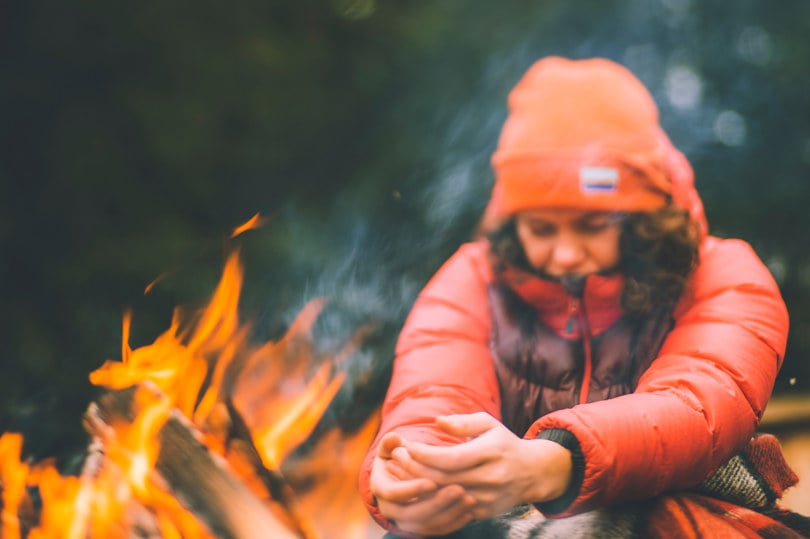
Pagoda bonfires
The most suitable fire in winter is the "pagoda fire". First, step to an area where you want to place the fire. Then you start by placing two of the largest logs next to each other about 20-30 centimeters apart. Across these, you lay two new logs so that there is a small room in the center of the structure. Here, birch bark, twigs or other kindling material is placed, preferably in a pyramid shape.
Once you have lit the kindling, feed the fire with several dry twigs or wood chips before you build on the fire with several layers of logs across those that have already been laid. This provides a powerful and solid fire that burns for a long time without you having to gather new wood too often. If necessary, put damp wood at the bottom of the structure so that it will eventually dry enough to burn. The fire will probably sink into the snow after a while, then it is a good idea to make a chute towards the fire pit to get air supply. This type of fire works well for cooking in a frying pan or larger pots.
Star bonfire
This fire is well suited for cooking and is made from logs that are placed in a star shape. Then place dry twigs, wood chips, fists and kindling wood in a pyramid shape between the logs. Feel free to chip up the logs with an axe or knife so that they catch fire more easily. When it burns well, a fire pit can be placed directly on the logs. As the logs burn up the inside, they are gently pushed towards the center, so that the fire stays and the foundation of the pot is still stable. You can also build a cooking rack over the fire – a so-called tripod.
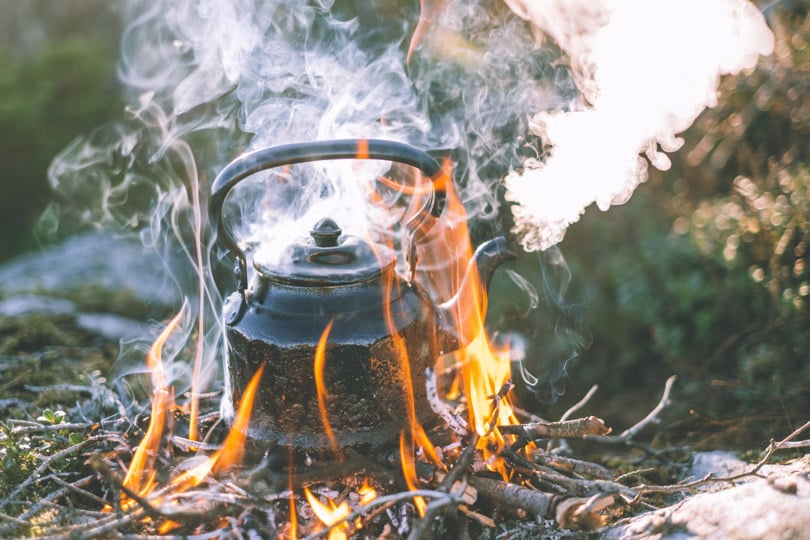
Nying (cane fire)
Nying is the traditional "lumberjack fire" that burns well and for a long time. This fire is perfect as a heat source if, for example, you sleep under the open sky at night.
The fire is built up of two large logs of dry pine or spruce with kindling wood and fuel between the logs. When it has caught fire, a third log can be placed over the fire, supported by two sticks that are placed crosswise near the end of the two large logs. The size of the logs will determine how long the fire burns. Remember a fire guard if you want to light a fire through the night!
Cooking on a fire
Campfire coffee and food made on a fire always taste good. Simple equipment in steel is often both inexpensive and can withstand being used in the flames.
When grilling, it is not in the flames themselves that it is best to place the sausage. Be a little patient and wait until the flames have calmed down or grill at the edge of the fire, where there are embers. This gives a much more stable and frying-friendly heat.
Wok in a fire pit provides healthy food in a flash.
If food is to be cooked for many people, it can be effective to make an oblong fire where part of the fire is used for the production of embers and the rest for the cooking itself.
Tips for campfire dishes can be found in many books and on a number of websites and blogs.
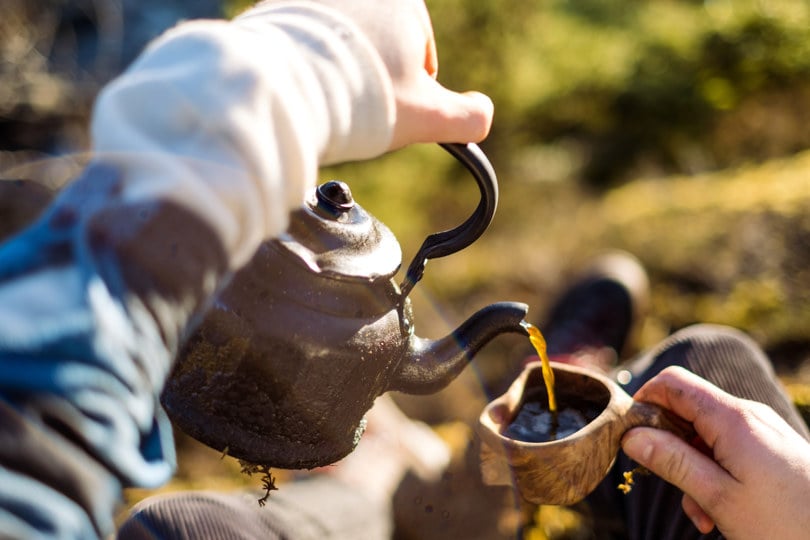
Frequently asked questions about bonfires
When can you light a fire?
In the period 15 April to 15 September, there is a general ban on bonfires in Norway. This means that it is not allowed to light bonfires, barbecues and disposable barbecues in, or near forests and other uncultivated land. However, it is permitted to make a fire where it obviously cannot cause a fire. See yr.no for an overview of forest fire risk.
Where can you light a fire?
In many places there are established fire pits that can be used all year round. Several municipalities have an overview of approved fireplaces. In all cases, look for places where fires have been burned before, to avoid unnecessary damage to nature.
Where can I get firewood?
Bring dry wood from home or sink along the way on the trip where allowed. Use dry twigs you find in the forest, but avoid damaging healthy trees. Bring a nail knife so you can cut off tiles and thinner sticks for kindling. Birch bark also works well, but only remove the outermost layer to avoid damaging the trees.
Are the rules for bonfires the same all over Norway?
No, familiarize yourself with the rules in the area you are in.
Important to keep in mind when lighting a fire
- Avoid lighting a fire if the surface can catch fire
- Avoid lighting a fire when there are strong winds
- Avoid lighting fires close to bushes and trees
- Avoid damaging healthy trees
- Avoid a fire pit on bare rock as the rock can crack
- Make sure you have water nearby
- Extinguish well and remove all traces
- Take all rubbish home
Free digital outdoor course: Bonfire and food on a winter trip
Watch our digital outdoor course on how to make a fire and what kind of food is suitable for a winter trip.

See also





